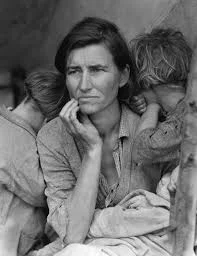-
 The Gilded Age continues
The Gilded Age continues -
 Regulated land rights on tribal territories within the United States.
Regulated land rights on tribal territories within the United States. -
 Rutherford B. Hayes is now the 19th president of the U.S.
Rutherford B. Hayes is now the 19th president of the U.S. -
 Series of violent rail strikes across the United States in 1877
Series of violent rail strikes across the United States in 1877 -
 Banned Chinese laborers from immigrating to the United States for 10 years
Banned Chinese laborers from immigrating to the United States for 10 years -
 The Interstate Commerce Act addressed the problem of railroad monopolies by setting guidelines for how the railroads could do business
The Interstate Commerce Act addressed the problem of railroad monopolies by setting guidelines for how the railroads could do business -
 Emerged in the early 1890s as an important force in the Southern and Western United States, but declined rapidly after the 1896 United States presidential election in which most of its natural constituency was absorbed by the Bryan wing of the Democratic Party.
Emerged in the early 1890s as an important force in the Southern and Western United States, but declined rapidly after the 1896 United States presidential election in which most of its natural constituency was absorbed by the Bryan wing of the Democratic Party. -
 Was made to curtail combinations of power that interfere with trade and reduce economic competition
Was made to curtail combinations of power that interfere with trade and reduce economic competition -
 the Supreme Court upheld the constitutionality of state-sponsored racial segregation, establishing the "separate but equal" doctrine.
the Supreme Court upheld the constitutionality of state-sponsored racial segregation, establishing the "separate but equal" doctrine. -
 A period of reform movements aimed at addressing social and economic problems, including corruption, inequality, and industrial abuses.
A period of reform movements aimed at addressing social and economic problems, including corruption, inequality, and industrial abuses. -
 An international conflict that in 1914–18 embroiled most of the nations of Europe along with Russia, the United States, the Middle East, and other regions.
An international conflict that in 1914–18 embroiled most of the nations of Europe along with Russia, the United States, the Middle East, and other regions. -
 The United States officially entered World War I on April 6, 1917, after President Woodrow Wilson requested a declaration of war from Congress
The United States officially entered World War I on April 6, 1917, after President Woodrow Wilson requested a declaration of war from Congress -
 A peace document signed at the end of World War I by the Allied and associated powers and by Germany in the Hall of Mirrors in the Palace of Versailles, France, on June 28, 1919; it took force on January 10, 1920.
A peace document signed at the end of World War I by the Allied and associated powers and by Germany in the Hall of Mirrors in the Palace of Versailles, France, on June 28, 1919; it took force on January 10, 1920. -
 A period of great social, economic, and cultural change in the United States.
A period of great social, economic, and cultural change in the United States. -
 Also known as Black Tuesday, was a major stock market crash that began on October 24, 1929, and culminated on October 29, leading to the Great Depression.
Also known as Black Tuesday, was a major stock market crash that began on October 24, 1929, and culminated on October 29, leading to the Great Depression. -
 a severe global economic downturn from 1929 to 1939, marked by high unemployment, poverty, and widespread bank and business failures, originating in the US with the stock market crash of 1929.
a severe global economic downturn from 1929 to 1939, marked by high unemployment, poverty, and widespread bank and business failures, originating in the US with the stock market crash of 1929. -
 He was elected President in November 1932, to the first of four terms.
He was elected President in November 1932, to the first of four terms. -
 The German invasion of Poland which led to declarations of war by France and Britain two days later. The war's origins stemmed from unresolved tensions after World War I, the rise of fascism and militarism, and aggressive expansion by Nazi Germany and Fascist Italy.
The German invasion of Poland which led to declarations of war by France and Britain two days later. The war's origins stemmed from unresolved tensions after World War I, the rise of fascism and militarism, and aggressive expansion by Nazi Germany and Fascist Italy. -
 The United States dropped atomic bombs on the Japanese cities of Hiroshima and Nagasaki, respectively, during World War II, resulting in the deaths of an estimated 150,000 to 246,000 people. These bombings, the only instances of nuclear weapons used in armed conflict, led to Japan's surrender and the end of the war
The United States dropped atomic bombs on the Japanese cities of Hiroshima and Nagasaki, respectively, during World War II, resulting in the deaths of an estimated 150,000 to 246,000 people. These bombings, the only instances of nuclear weapons used in armed conflict, led to Japan's surrender and the end of the war -
 Truman announced Japan's surrender and the end of World War II. The news spread quickly and celebrations erupted across the United States.
Truman announced Japan's surrender and the end of World War II. The news spread quickly and celebrations erupted across the United States.